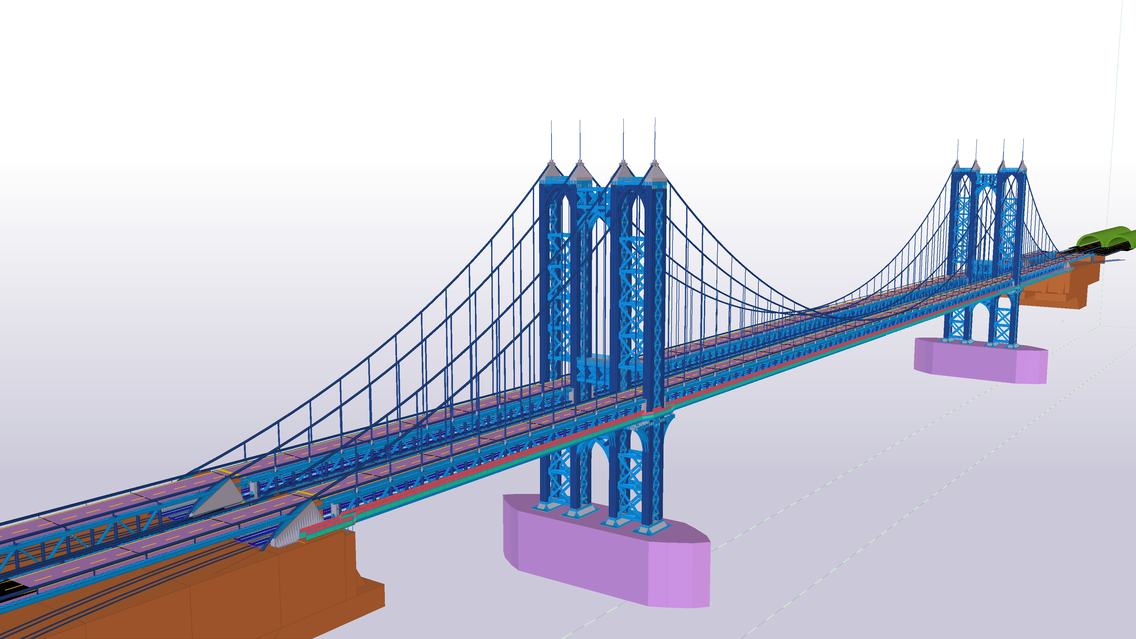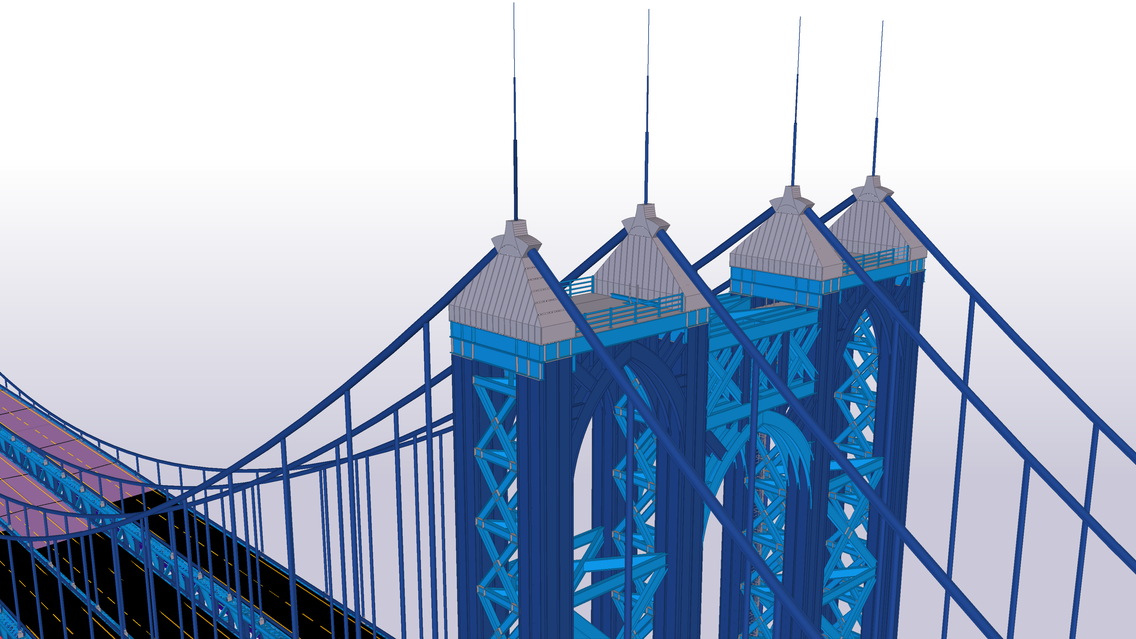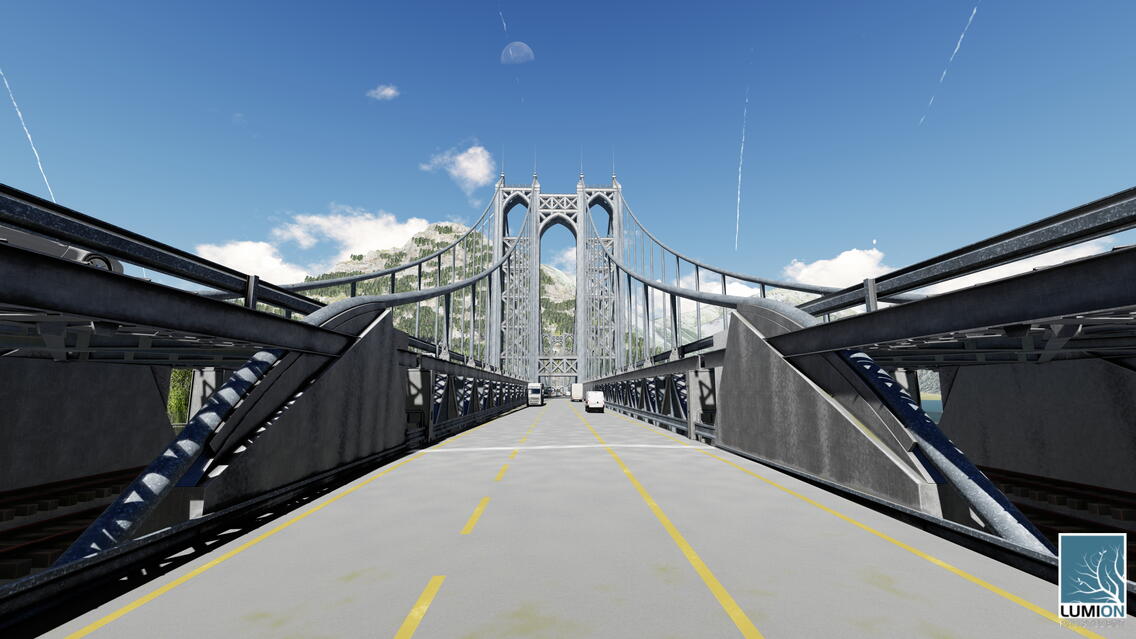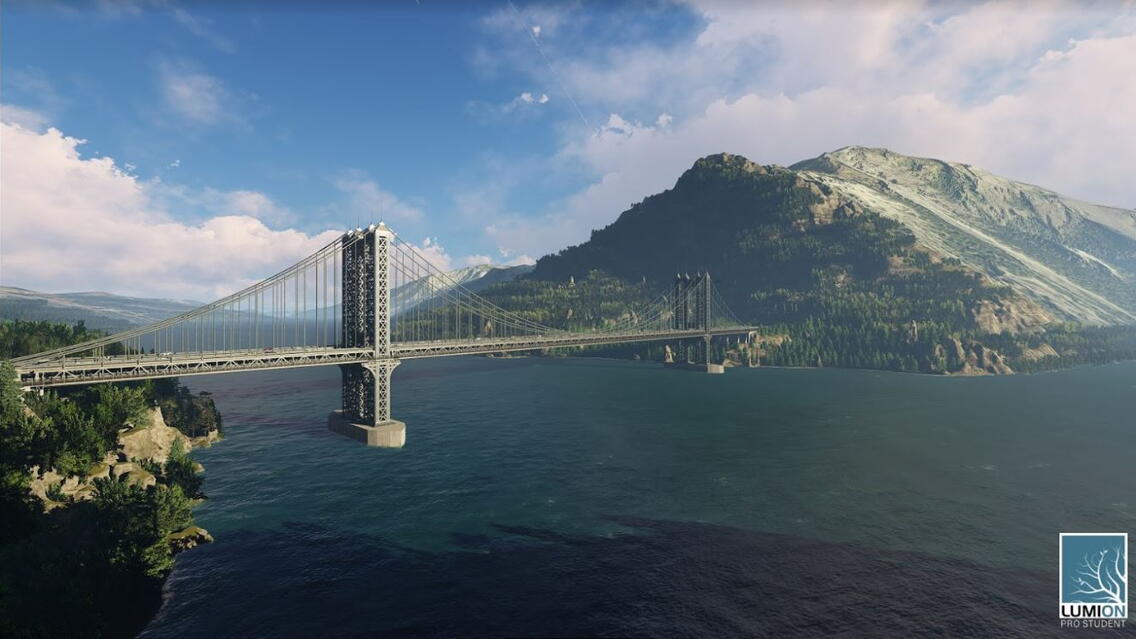Steel suspension bridge
The Bridge model was designed by Petr Vicena, a 3rd year student at the Secondary School of Civil Engineering in Valašské Meziříčí, with a specialization in Building Construction.
The model was constructed as a part of his work within a civil engineering subject group, structural mechanics and 3D BIM modeling programs. Petr has used Tekla Structures for bridge design and for final adjustments, the Lumion rendering and visualization program. Petr modeled his bridge during the course of the whole school year. He took several expert consultations and worked with information from various sources, e.g. historical documents and photographs of various old bridges. He has a particular interest in steel structures and, above all, bridges. The Manhattan Bridge was one of his inspirations. A great part of his personal time went into working on the bridge design.
The model is a steel suspension bridge. The bridge construction system consists of four main carrying cables, which transfer the weight of the bridge deck by regular suspension cables into two pylons. The carrying cables are mounted on the pylon’s saddles and anchored at the ends in massive anchor blocks. The bridge deck consists of four main trusses, crossbars, sidebars and bracing. The deck has two levels.
The span between the pylons is 408 meters, the total length of the bridge is 666 meters, the width of the bridge is 43 meters, the height of the pylons is 110 meters, and the height of the top viewing platform is 105 meters. The main carrying cables are 600mm in diameter. The weight of the steel structure is 54.4 thousand tons (54376587.9 kg). There are two pedestrian walkways, seven road lanes and four subway lines at the lower level of the bridge deck.
The bridge is not perfect and not everything is finished to the last detail. But that wasn't the intention. By working on the model,Petr Vicena has gained a great deal of new insight about steel structures design, static functioning of suspension bridges, spatial layout of bridge decks, including varied sorts of traffic on it and much more.
Petr has learned how to use Tekla Structures 3D BIM program to find collisions, generate drawing documentation and material lists. He has also learned exporting data to visualization programs and get slideshows using generated images, videos and panoramic photos. He also could check out his bridge in virtual reality.
By working on this project, the student simulated the construction of large scale steel bridges, which, with the perspective of his future university studies and later practical application, was a very interesting experience.









